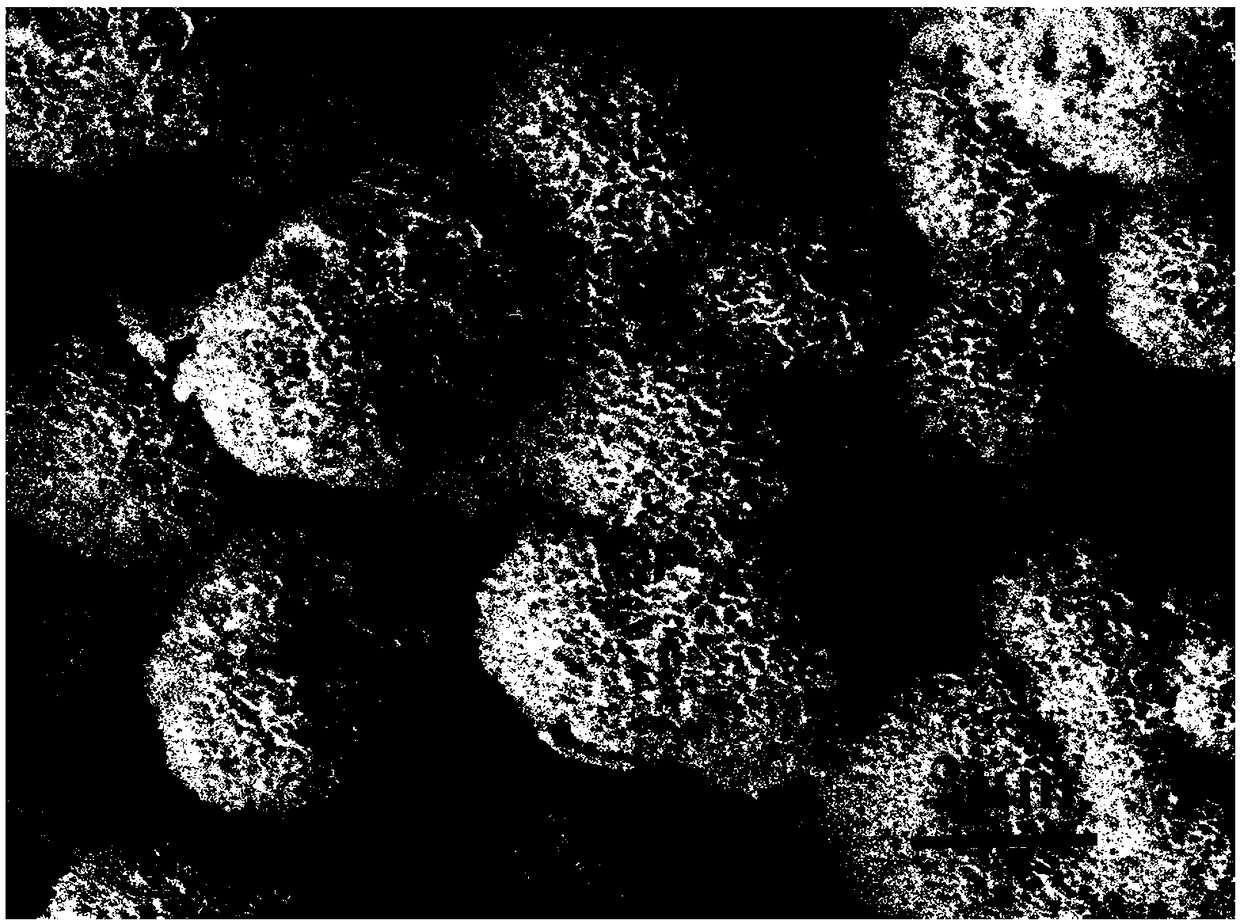Tooth desensitizer containing phosphosilicate glass as well as preparation method and application thereof
A technology of phosphosilicate glass and desensitizing agent, applied in the field of dental biomedical materials, can solve problems such as pH increase, unfavorable cell survival, and affecting ion release rate in materials, so as to stabilize pH value and improve compatibility Effect
- Summary
- Abstract
- Description
- Claims
- Application Information
AI Technical Summary
Problems solved by technology
Method used
Image
Examples
preparation example Construction
[0040] The preparation method of the present invention will be further described in detail in conjunction with specific examples below. It should be understood that the following examples are only for illustrating and explaining the present invention, and should not be construed as limiting the protection scope of the present invention. All technologies realized based on the above contents of the present invention are covered within the scope of protection intended by the present invention.
[0041] The experimental methods used in the following examples are conventional methods unless otherwise specified; the reagents and materials used in the following examples can be obtained from commercial sources unless otherwise specified.
preparation example
[0043] The preparation method of the phosphosilicate glass used in the following examples can be obtained by referring to the method disclosed in the Chinese patent document ZL201010248059.4 or Biomed. Phys. Eng. Express 3 (2017) 045017. Exemplarily, the preparation method of the calcium phosphosilicate glass described in Example 1 is as follows:
[0044] Using a mixture of ethanol and water as a solvent, mix phytic acid, tetraethyl orthosilicate and calcium nitrate tetrahydrate to prepare a gel precursor sol solution (the mixing ratio is selected according to the material requirements), and place it at room temperature until the gel ;Aging at 60°C for 1 week, then take it out and bake it in an oven at 120°C to volatilize all the solvents in it, sinter the dried gel at a temperature of 400-700°C, and keep it warm at this sintering temperature After 1 hour, it was naturally cooled to obtain a calcium phosphosilicate glass.
[0045] The content of calcium oxide in the calcium p...
Embodiment 1
[0048] A preparation of a tooth desensitizing agent containing calcium phosphosilicate glass-gelatin-phosphate buffer solution, the steps are as follows:
[0049] (1) Preparation of gelatin-phosphate buffer solution: Dissolve 0.5 g of gelatin in 10 mL of deionized water and heat at 60° C. for 30 min, add 10 mL of phosphate buffer, and dissolve to obtain gelatin-phosphate buffer.
[0050] (2) Preparation of desensitizing agent: Stir and mix the calcium phosphosilicate glass with the gelatin-phosphate buffer solution in step (1) at a ratio of 1:10 (g / mL) to obtain the tooth desensitizing agent.
[0051] Wherein, the content of calcium oxide in the calcium phosphosilicate glass is 29wt%, the content of silicon oxide is 48wt%, and the content of phosphorus oxide is 23wt%.
[0052] The prepared tooth desensitizing agent is coated on the surface of the dentin layer ( image 3 ), it was found that the dentinal tubules were almost completely closed.
PUM
 Login to View More
Login to View More Abstract
Description
Claims
Application Information
 Login to View More
Login to View More - R&D
- Intellectual Property
- Life Sciences
- Materials
- Tech Scout
- Unparalleled Data Quality
- Higher Quality Content
- 60% Fewer Hallucinations
Browse by: Latest US Patents, China's latest patents, Technical Efficacy Thesaurus, Application Domain, Technology Topic, Popular Technical Reports.
© 2025 PatSnap. All rights reserved.Legal|Privacy policy|Modern Slavery Act Transparency Statement|Sitemap|About US| Contact US: help@patsnap.com



